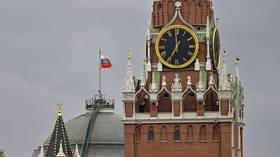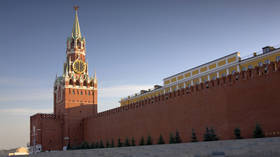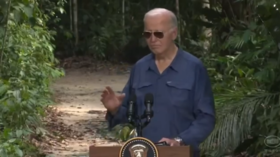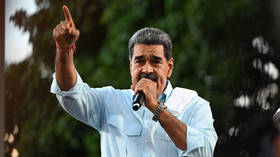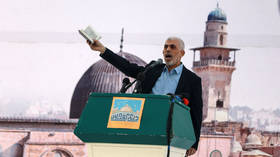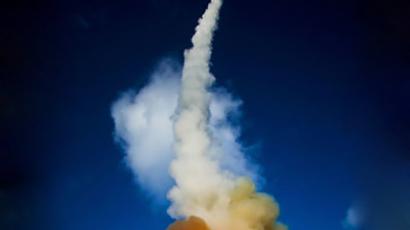End to energy nukes: Russia ships last weapons-derived uranium batch to US

Russia is set to deliver the last 160 tons of low-enriched uranium to the US as part of the “Megatons-to-Megawatts” program. The fuel obtained from disarmed Russian nuclear warheads has been used to generate about half of total US nuclear power.
Ten cylinders with low-enriched uranium (LEU) will be shipped
from St. Petersburg to Baltimore, a Rosatom spokesperson told RIA
Novosti.
The shipment marks the end of the 1993 United States-Russia
Highly Enriched Uranium Purchase Agreement, which was a spin-off
of the landmark bilateral Strategic Arms Reduction Treaty
(START).
Under the 1993 agreement, Russia downgraded some 500 tons of
highly enriched uranium (HEU) and sold it to the US. The HEU-LEU
contract, also known as the “Megatons-to-Megawatts” deal,
encouraged Russia to dispose of its nuclear warheads as part of
non-proliferation treaties, and enabled the United States to save
on its nuclear fuel production for power plants.
According to US Under Secretary of State for Arms Control and
International Security, Rose Gottemoeller, the downgraded Russian
uranium has been “used by nearly all US nuclear power plants
to generate half of the nuclear energy in the United States.”
The uranium - derived from about 20,000 disarmed Russian warheads
- has been used to light and heat American homes for 20 years,
generating 10 percent of all US-produced electricity,
Gottemoeller told a UN committee in October. That amounted to
seven trillion kilowatt-hours, according to Rosatom head Sergey
Kirienko. A smaller amount of uranium from disarmed American
weapons has also been used for the same purpose.
Calling the HEU-LEU treaty a “significant non-proliferation
accomplishment,” Gottemoeller said the US looked forward to
“celebrating this historic achievement” at the ceremony
marking the shipment of the final Russian uranium fuel containers
in St. Petersburg.
However, Russia has stressed that it will not be extending the
contract, despite US proposals. Although the US paid more than $8
billion for the uranium fuel, and the estimated total payment may
reach as high as $17 billion, it still purchased the downgraded
uranium at below market price.
Instead, a new agreement has been signed between the United
States Enrichment Corporation (USEC) and Russia’s Techsnabexport
(TENEX), under which the US will purchase commercially produced
Russian uranium fuel for American power producers. According to
USEC spokesman Jeremy Derryberry, the new contract is “based
on market prices.”


